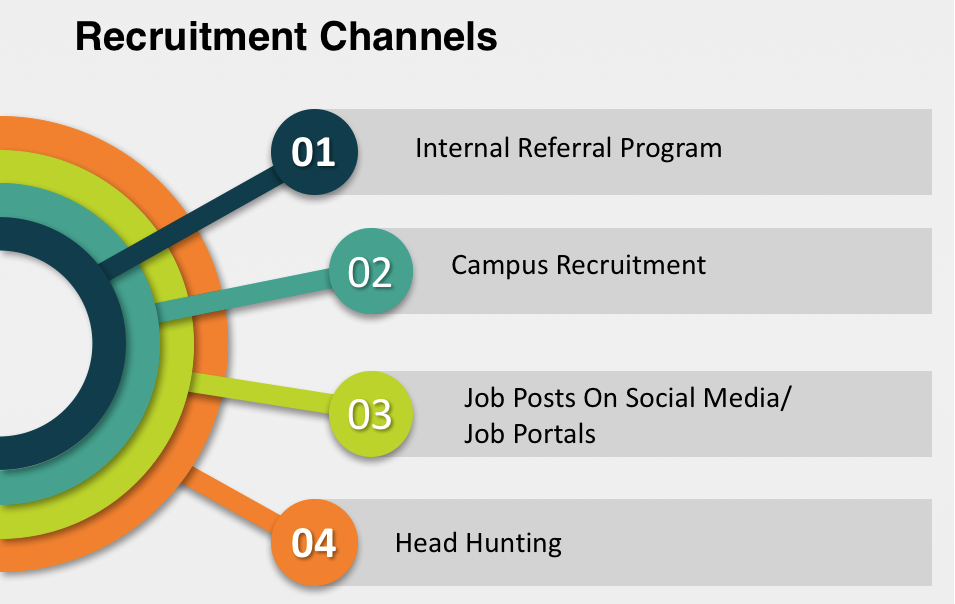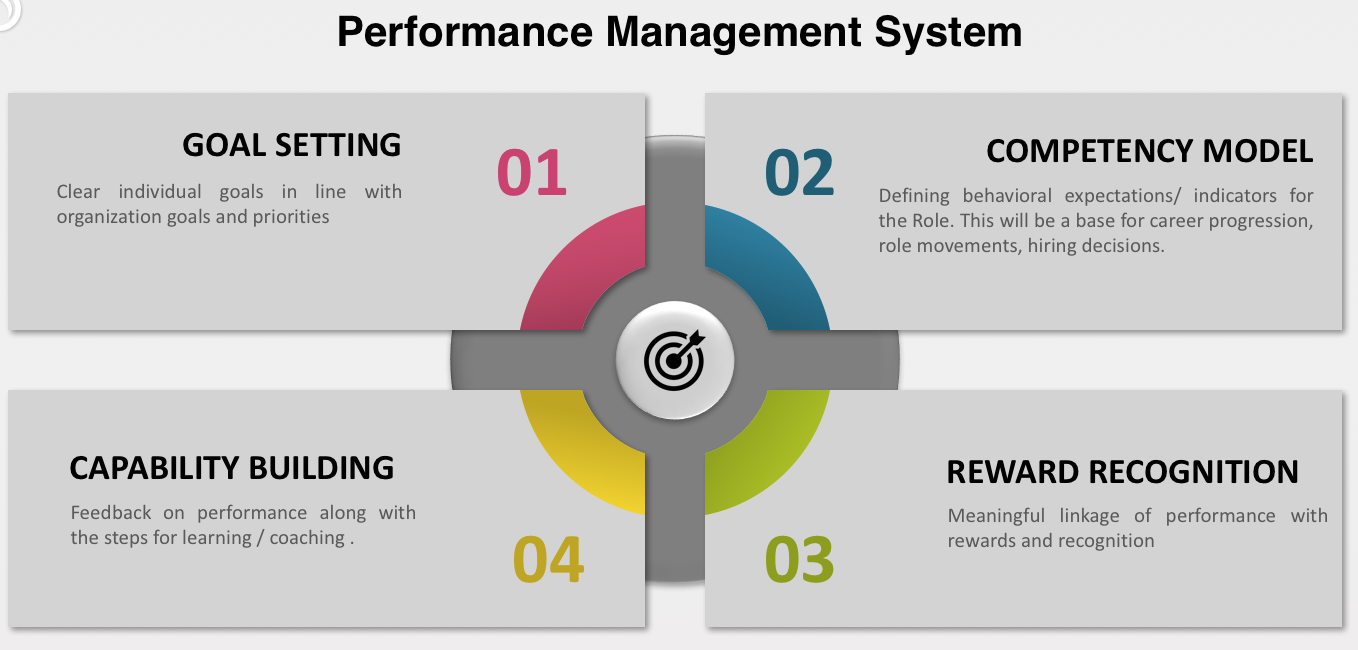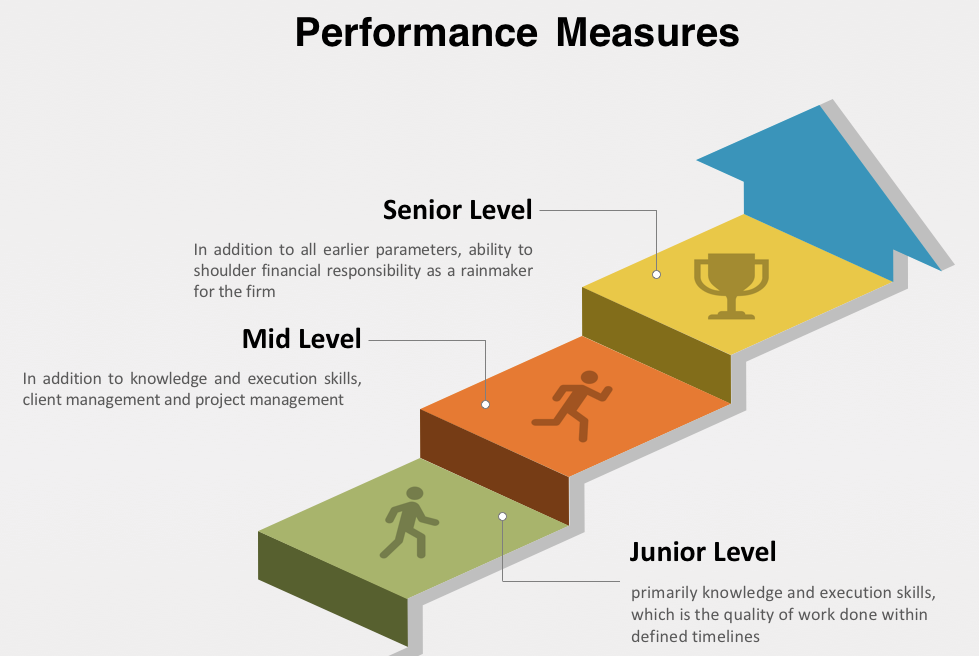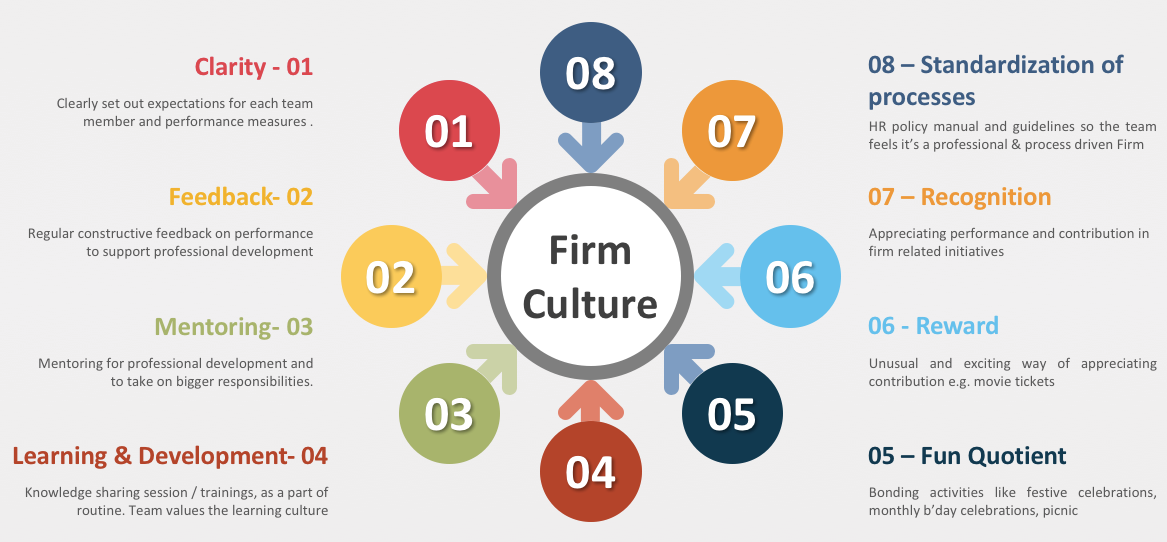There is no other resource like human resource. As clichéd as it might sound, it is true. It is the people of the business that make it work. Be it a multi-national, a SME or just a mom & pop shop at the corner of the street; it is an accepted fact that, the better the people running the business are, the higher the chances of it being more successful.
Here’s another fact: finding good talent is hard but retaining it is even harder.
This conundrum is faced by many businesses. While singling out one specific industry is unfair, this is majorly witnessed by businesses engaged in the service sector, and that’s where all professional services belong; not just chartered accounting firms. Rather, the need, concern and effectiveness of a talented pool of human resources for a chartered accounting firm becomes even more critical considering the responsibility, statutory obligations and the positioning that this profession carries.
In the current era, significant changes are observed in the manner and behaviour of chartered accounting firms while dealing with their employees. The sole objective is not just to retain them, but ensuring that the firm stays attractive enough to bring new talent on board. This issue to some extent may be diluted for firms with a brand name or muscle power, though let me assure you that these are the firms that not only have the highest spends but also the maximum attention by bringing in best global practices. But the question is, can we say the same for a mid-sized chartered accounting firm? Probably not. All the firms want to put together the most effective and efficient team possible, to support their clients. Thus, the issue of talent retention remains universal.
Moving with the times
I read somewhere that “Agile isn’t just for tech anymore.” And how true is that! There was a time when students used to go from firm to firm applying for articleship, with a hope that they would get selected. However, the paradigm that applies to the service sector also applies to chartered accounting firms. These days, it is the firm that needs to be ‘interesting’ enough for the students to even apply for an articleship. The onus to showcase how good a firm is, lies with the HR of that firm, who goes with a marketing pitch to these students who are years away from being Chartered Accountants. And, it is the students who makes a choice. This is a perfect example of changing times.
With the changing landscape of chartered accounting firms and an ever-raising bar of clients’ expectations; mid-size chartered accounting firms have no option but to let go of the inertia set in related to people processes, which has been the practice so far. So, the agility of the firm and ability to bring this change is crucial. But isn’t it true that anything crucial is never easy? As the saying goes, “It’s easier said than done”. Now, let’s see how mid-size firms can do it, rather achieve it.
In this article, I have attempted to cover the following three core aspects of HR that mid-size chartered accounting firms should focus on. I have also elaborated how with limited means this can best be achieved.
- Talent Management – which includes talent attraction as well as retention.
- Team Efficiency – also means growth and sustainability of the team, which includes:
- Performance Management Systems
- Reward Mechanism
- Mid-Career Crises
- Aspects that help to build Firm Culture:
- Work environment where performance is recognised
- Standardisation through HR processes
- Fun element to make the work place exciting
But before we go to the core, here are a few thoughts: does the firm have a vision which is translated into common objectives? Is the team aligned with these objectives? And what is the approach?
Drawing a game plan
If you don’t know where you’re going, then you’ll never get there… and if you don’t set the bar high enough, you’ll never live up to your potential.
It’s essential for every firm to have a goal, which is well understood by every stakeholder in the firm. Some organisations call it ‘target’, some call it ‘objectives’, whereas some call it ‘areas of focus’. It is absolutely necessary to have this direction. Very often, firms get so engrossed in the execution mode that they are unable to take a pause and decide what they want to achieve collectively as a firm, throughout the year. The existence of a goal helps to channelise the firm’s energies in the right direction. Merely having a goal is not enough, continuous focus towards achieving it can only enable in channelising the firm’s energy. When firms know what they want to achieve, it becomes easier to align people and processes.
Having identified the firm’s goal, an important area is organisational structure – a backbone of any firm, irrespective of size, but it is often neglected in mid-size firms. Creation of an organisational structure brings in significant clarity in many ways: the hierarchy, reporting lines, a span of control at each level, career path, etc. Unless there is an organisational structure, it is difficult to map the firm-wide talent need. Talent need encompasses the number of people, their experience level, required skill set, areas of expertise. Due to a lack of focus on HR functions, organisational structure is either absent or completely skewed. Though my experience tells me that, in some cases an informal organisational structure gets created. While it may achieve the results to some extent, it fails to optimise the full potential of the firm and its employees.
The existence of an organisational structure will help in identifying and eliminating excess bench strength and thereby optimising payroll cost and rationalising the operational cost.
Organisational structure will vary firm to firm, depending on the business model, expertise and skill level, delegation of responsibilities and of course, focused practice areas.
Setting up a goal supported by organisational structure helps in outlining clear roles and responsibilities at a firm level. And, it is needed. Even the junior most team member likes to know what is expected out of him/her, how the contribution will be measured, and what is the growth path. Role clarity further helps to bring accountability within the team.
Attracting talent
Once you have the basics clear, you know what you are looking for. However, does it mean that the person on the opposite side of the table is also looking for the same thing? Chances are, that both of you might not be on the same page.
When you ask any aspirant, where he/she wants to work, the answer invariably is; at a good firm. For most, that ‘good firm’ is always at the top of the hierarchy. While this is always a matter of opinion, there is something ‘special’ about every firm and more so about a mid-size CA firm. Let me add, if you believe that there is nothing ‘special’, it is essential that you work towards creating that element which makes your firm ‘special’. This ‘special’ element will enable your firm to attract talent.
How do you send this message across?
Creating a brand value is a crucial aspect while looking to hire for your firm. If your prospective candidate does not know what your firm does, how will you convince him/her to join you?
Talk about your brand value; you need to position your firm well while you are in the process of hiring new talent for your firm. How do you do that? Always remember that your brand needs are to be projected a cut above the rest. There are a few aspects that you have, which many other firms may not. While talking to your prospective candidates, why not highlight those aspects that would make them want to consider your firm? Illustrative constitution of the firm, niche created by the firm, nature of clientele, geographic spread, work policies, technical knowledge and expertise, etc.
While you may not be able to use the conventional ways of talking about your firm, you can certainly use the new age methods. Social media presence is one of the best ways to create your firm’s brand value that can help you find your spot in the mix of things.
Addition of a special column reflecting the work culture or work concept in regular newsletters or publications issued by the firm has also proved to be an effective medium to attract candidates.
Participating in knowledge sessions, lecture series or conducting seminars at various forums has traditionally been and still continues to be a tool to demonstrate to the candidate, a perspective of your firm. Recent times demand continued networking by the firm with these institutions. This in turn gives the candidate a better chance to know your firm and its culture. At the same time, expanding the options of prospective candidates of the firm.
 Beyond the above, one may optimise all other channels while hiring including; internal referrals, campus recruitment, job portals/posts, internal transfers instead of losing talent, etc. Last but not the least, headhunting is always an option available and should be effectively used to fill senior level or unique positions.
Beyond the above, one may optimise all other channels while hiring including; internal referrals, campus recruitment, job portals/posts, internal transfers instead of losing talent, etc. Last but not the least, headhunting is always an option available and should be effectively used to fill senior level or unique positions.
Performance, growth and sustainability
In this ultra-competitive job market, it is tough to find the right talent that fits the bill. Therefore, when you find one, retain. Just as you have managed to get the attention of the person you are looking for, you also need to make sure that the person stays with the firm and grows.
The new generation employees demand clarity in many ways including; process, career path, performance measures and rewards. This is where the annual goal setting, organisational structure and clearly defined roles and responsibilities play a crucial role. Employees usually feel more engaged when they believe that the firm is concerned about their growth and provides avenues to reach individual career goals while fulfilling the firm’s objectives.
One the most effective ways of achieving this is to have a robust Performance Management Process aligned with the firm’s goals and values. In recent times, the purpose of this process has expanded to not just determining annual increment, but acting as a source of mentoring and guidance for professional enhancement. No mentoring process can be a one-time affair, so the practice of annual performance review is fading away. E.g. when an employee works on multiple assignments throughout the year, performance feedback given once a year loses significance because most often such feedback tends to be based on recent experiences. On the other hand, a regular performance dialogue vis-à-vis performance measures is an apt, more constructive and meaningful process for the professional development of the employee. Such performance dialogues can be held on completion of each assignment or on a periodic basis. Whatever may be the periodicity, it is vital that such discussions are formally recorded for future reference and comparative analysis.

The traditional process of partner and manager giving feedback to an individual, helps the individual grow professionally. Similarly, for the firm to understand team expectations and to realign to the changing trends, upward feedback can be a great tool. This is generally best achieved when tried anonymously.
The next most important aspect is the reward mechanism, both extrinsic and intrinsic. The extrinsic rewards are; salary and career progression, and intrinsic rewards are; satisfaction and pride. A reward mechanism is a beautiful way of recognising performers in the system. In addition to fixed salary, a firm can always adopt a structure where a part of the pay-out is linked with the firm achieving its objectives, as well as individual performance.
While designing performance measures:

The performance linked pay-out will drive the team to achieve the firm’s goals and objectives, and at the same time, will motivate performers.
The planning, organisational structure, role and responsibilities and regular performance feedbacks will collectively support in having a fair reward system in place, and will help in deciding the firm’s compensation philosophy. The overarching requirement while determining the reward mechanism is to stay in tune with market dynamics. Know what your competitors are offering; there are enough data points and ways to engage in compensation benchmarking.
Dealing with mid-career crisis
Have you observed the enthusiasm and excitement with which a new employee enters the office on his/her first day? Have you also observed whether the same level of enthusiasm and excitement continues? As days went by, has this enthusiasm and excitement withered away? Do not take it personally. It is not that the firm has stopped offering the same environment as before. But because the firm has failed to enhance the environment, or let’s say that the employee’s expectations have increased or changed. This is a common phenomenon.
Most employees always want something new in their line of work. While they execute the same kind of roles and responsibilities, day after day, there comes a point when they become listless, and well, somewhat tired. This is not entirely the fault of the firm. Let’s just call it “Mid-Career Crisis”.
One of the challenges mid-size firms face is developing a career path for the employees who have progressed in the profession, but have reached a glass ceiling where they start feeling stagnated. Firms can help employees to explore new skills, new geographies, new roles, and can also offer job rotation.
Have you thought of mentoring mid-level employees to become future mentors – it helps in two ways; keeping long-term employees engaged with the firm, and instilling the work culture of the firm in newer employees.
Having a retention plan

In the absence of a proper retention plan, keeping the talent within the firm is a difficult task. Planning, growth, performance management, and the compensation policy; are all a part of retention strategies, but is that all? There is more to it. If this has got you thinking about the people in your firm who are already looking like they are ready to jump the ship, there are a few things you can do:
- Recognition: Everyone wants to be recognised for a job well done. All that it takes is a few internal announcements. Recognising your employees’ efforts go a long way into keeping them happy and motivated. This gives them a sense of belonging, knowing that someone is there to appreciate their work. It makes them feel more accountable towards their job, and they make extra effort.
- Reward: Not all rewards need to be monetary. There are other ways to reward your hard-working employees with unusual and exciting things, e.g. movie tickets for the employee and family. Sometimes, small things make a huge difference for them. Your people appreciate when they know that they are cared.
- Standardisation and policies: Adopting a standard yardstick when dealing with people related situations, creates an unbiased environment and will earn respect from the employees. It is always a good practice to have an Employee HR Manual which states the firm’s guidelines, which simply put, are accepted behavioural norms within the firm.
- First impression: First few days can be crucial for any new employee. A new employee begins to form an impression of the firm, and sometimes it influences the decision to stay with the firm in the long term. Create an impeccable onboarding experience. Have a well-designed induction and orientation program which not only talks about the firm pedigree and processes, but also sets clear expectations for a new joiner. Everyone wants to be part of a professional firm, and this is where it all starts.
- Fun quotient at work: All work and no play make Jack a dull boy. Fun quotient can be built in by having a structured calendar of team bonding activities and informal events throughout the year. Not necessarily an elaborate one. But believe it or not, the team that laughs together and has fun together is more likely to stick together. Because of the high emotional quotient, they treat the firm as family and the sense of belonging is high.
Clients being a source of revenue are important, and firms always ensure to make them feel that they are taken care of. The same applies to employees as well, since the absence of good employees will fail the effort to make clients feel important. Thus, a little bit of effort goes a long way and this can be seen not only in the work ethics but also the attitude of the employees.
Exit does not mean the end
If there is a beginning to every story, there is bound to be an end. For some, the end is retirement. In the current era, it’s a complete rarity. These days, end arises through resignations. Not all resignations need to be sad or bad. In fact, the manner in which a firm handles these ends, goes a long way in enhancing the respect and repute thereof.
Each individual has his/her own aspirations and a quest to move ahead in life. For some, they find that in the same organisation, whereas, for some it may mean that the “grass is greener on the other side”, so they move to a new organisation. This situation is bound to arise no matter what the size of a chartered accounting firm is. Sometimes, even though there is no push factor, there is always a strong pull factor and individuals are lured to explore.
While you would be losing on a good resource, it does not mean that it’s the end of a good relationship.
The exit process plays a very crucial role for mid-size chartered accounting firms. There has to be a robust system in place so that the exit of an employee is a smooth transition. Have a feedback mechanism since an employee on the verge of exiting is more likely to give honest and open feedback, which will help in making improvements, for the betterment of the firm.
If the individual is leaving for growth, this is your chance to help the person bloom, so that he/she becomes a brand ambassador for the firm. It is a small world. Chances are that you will run into this employee somewhere at some point in time. Always keep your door open so that he/she feels comfortable enough to approach you in time of need. Don’t let emotions overpower you and do it more gracefully.
In this dynamic world, for businesses and especially those engaged in the service sector, the new mantra is to shift the focus from client management to resource management, because only the availability of resources as and when required, will enable you to cater to those clients. Adding to this, let me quote Sir Richard Branson who said “Clients do not come first. Employees come first. If you take care of your employees, they will take care of the clients.”
Stratagyn Human Resource Solutions:
Stratagyn Inc Human Resources Consulting team has experience of a vast array of different situations. We offer flexible, reliable HR Outsourcing and Project consulting human resource support, where your firm is the key focus. Our experienced professionals can objectively assess your organisation and your human capital needs, to further develop your businesses performance.
To learn more, contact us on +91-9820918899 or e-mail reachus@stratagyn.com




